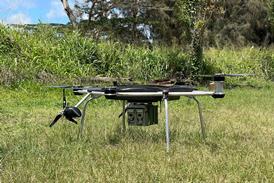Despite fears that the four-year surge in the global business aviation market has peaked, the Middle East's largest operator shows no signs of reining in its ambitions. Abu Dhabi's Royal Jet is to double its fleet to more than 20 aircraft by 2013 on the back of soaring demand for business aviation in the region. Most of the new jets will be large-cabin and super-midsize types.
The government-owned company - the biggest operator of Boeing Business Jets with a fleet of five - is one of several Gulf-based business aviation players with bullish plans. However, with few home-grown pilots, all these operators are fighting to attract a shrinking pool of experienced captains and first officers from Australasia, Europe and North America.
Speaking at Royal Jet's fifth birthday celebrations in London on 5 March, chief executive Shane O'Hare said the company's strategy was part of a wider commitment to turn the United Arab Emirates capital into an "international aviation centre of excellence". Royal Jet forecasts a 40% annual increase in the Middle East business aviation sector over the next five years, with Saudi Arabia, followed by the UAE, "driving the momentum".
Royal Jet currently has 60 pilots, almost all of them expatriates, and 12 aircraft. In addition to the BBJs, it operates a Gulfstream GIV SP and two G300s, a Bombardier Learjet 55 - used for medevac - and two Learjet 35s, as well as a BAE Avro RJ85.
Ironically, the frenetic expansion of Abu Dhabi's neighbour Dubai has been one of the reasons behind Royal Jet's success. A shortage of housing and office space, traffic problems and airport capacity issues have led to more international companies using Abu Dhabi as their gateway to the region. Royal Jet, which operates its own fixed-base operation at Abu Dhabi airport, saw a 90% increase in traffic using the facility last year.
O'Hare says the company plans to achieve a turnover of $500 million by 2013, a fivefold increase on today.
Source: Flight International
















